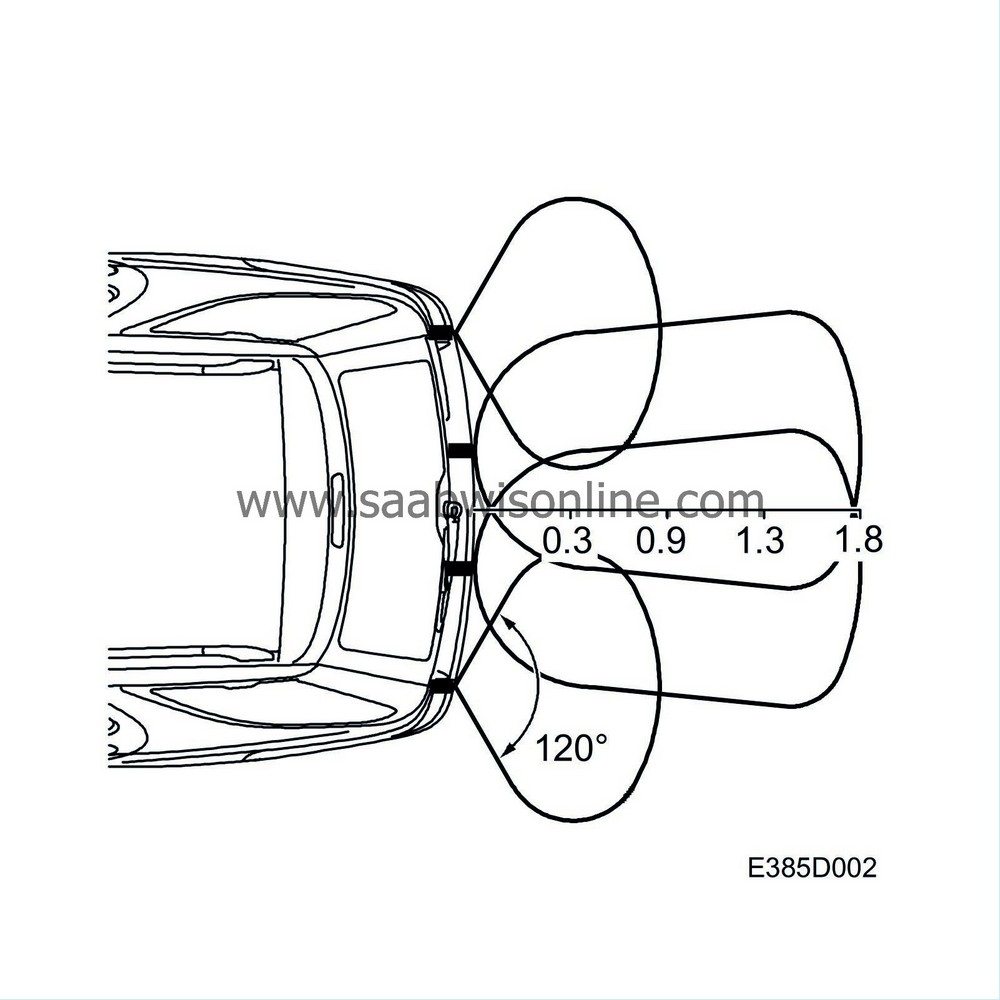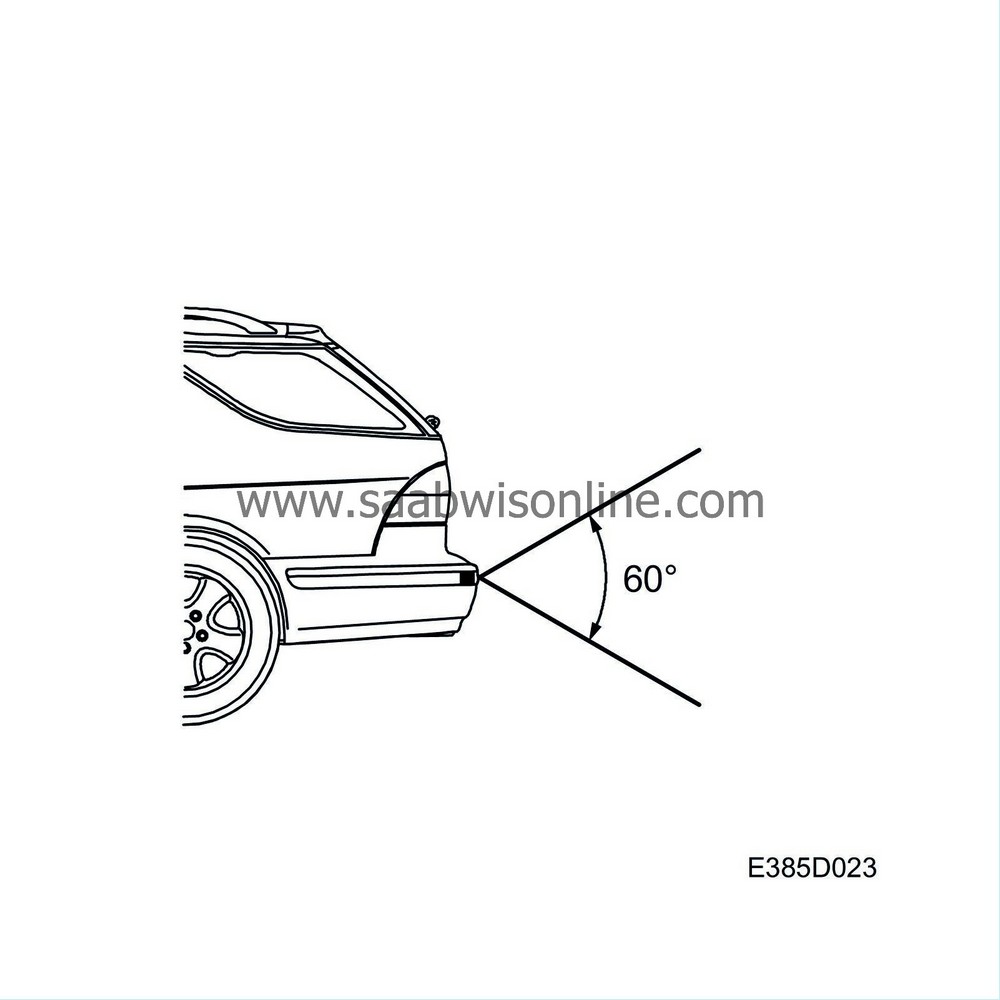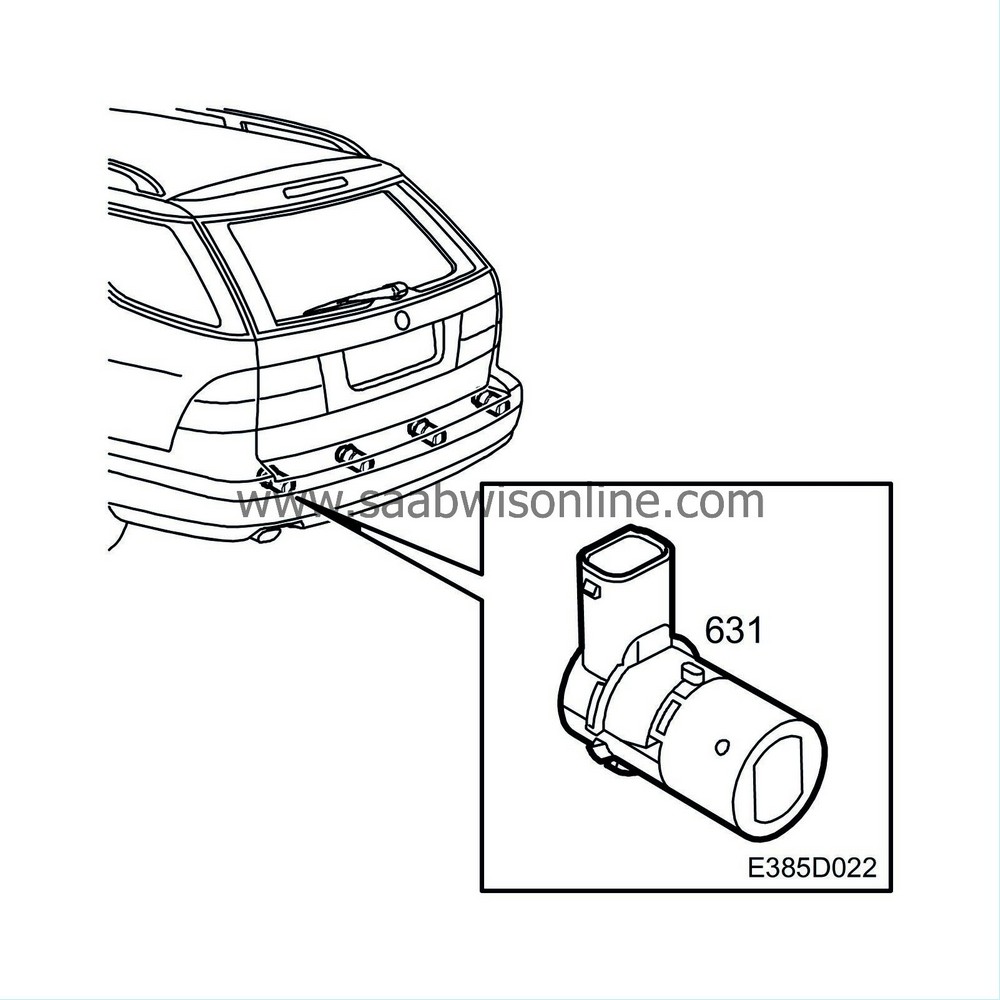PRE-RELEASE
Saab Parking Assistance (SPA)
| Saab Parking Assistance (SPA) |
The SPA measures and indicates the distance to the closest object behind the vehicle. The distance is indicated via the SID (Saab Information Display) in the form of acoustic signals.
While the vehicle is reversing closer to an object, the signal from the SID becomes more frequent (more signals per unit of time). In this way the driver can avoid damage to the vehicle when reversing e.g. when parking. SPA is activated only when the reverse gear is selected.
In 4D variants, the control module is located behind the backrest member, under the side trim on the left-hand side.
In 5D variants, the control module is located under the front floor in luggage compartment.
The four distance sensors use ultrasound to measure the distance to the closest object behind or alongside the car. The sensors are located in the rear bumper and are named as follows:
| • |
Left-hand outer distance sensor (RL)
|
|
| • |
Left-hand centre distance sensor (RLC)
|
|
| • |
Right-hand centre distance sensor (RRC)
|
|
| • |
Right-hand outer distance sensor (RR)
|
|
| Turning off SPA |
If you wish to turn off the SPA, for example when towing a caravan, press the CLEAR button on the SID when “PARK ASSIST” is displayed until ”PARK ASSIST OFF” appears, approx. 1-2 sec.
The previously selected function is displayed by touching one of the SID buttons while the SPA is active. The SPA remains active.
If you wish to reactivate the SPA there are two methods:
| • |
Press CLEAR until the SID text changes (the text is not shown until the function is ON/OFF).
|
|
| • |
Turn the ignition ON and OFF.
|
|
The text message is stored in English, Swedish, German, Spanish, French and Italian in the SPA unit. It is sent via the I bus to the SID, where it is displayed.
The text messages are as follows:
| - |
PARK ASSIST
|
|
| - |
PARK ASSIST FAILURE
|
|
| - |
PARK ASSIST OFF
|
|
| Distance measurement and indication |


The control module receives information from the DICE when reverse gear is selected. The control module accordingly activates the distance sensors. The sensors emit and receive ultrasound signals, sent in a preset pattern, see Distance sensors .
Continuous data from the sensors regarding the closest object is processed by the control module so that the correct signal is sent to the SID, to then be sent to the driver. The information is sent to the SID over the I bus.
The driver receives information from the SID regarding the closest object behind the vehicle in the form of pulses of sound of varying frequencies. The first indication is given when there is an object 1.8 m behind the vehicle. The frequency of the signal is then 2 pulses per second.
The frequency of the signal increases the closer to the object the car comes. The signal changes as follows:
| • |
1.8 - 1.3 m: 2 pulses/second
|
|
| • |
1.3 - 0.9 m: 3 pulses/second
|
|
| • |
0.9 - 0.3 m: from 5 to 12 pulses/second in close steps
|
|
| • |
0.3 m: continuous tone
|
|
If the driver reverses at a speed greater than 1.8 m/s (6.5 km/h), the SPA is of no benefit since the indication of distance is limited to 1.8 m behind the car. The driver has therefore only 1 second to react and bring the car to a halt. In addition the braking distance must be taken into account. For the SPA to be of benefit, moderate speeds must be maintained.
If the distance sensors are covered by ice, snow or dirt, their function will be impaired. In such cases the distance sensors should be wiped clean.
When reversing on a surface that is highly reflective to ultrasound, the system can indicate the distance to the ground instead of the closest object behind the car. This can occur, for example, on unmade roads or other uneven surfaces. Testing of the function of the SPA must be carried out on an even surface with no objects placed on the ground.
Objects alongside the car
The SPA also takes objects beside the car into consideration, such as when reversing alongside a garage wall. In cases where the outer distance sensors detect an object that is not detected by the centre sensors, the object is indicated as an object alongside the car. The threshold for detection of objects beside the car is approx. 40 cm.If the object alongside the car remains at a constant distance for longer than 3 seconds, side indication is halted, and only objects directly behind the car are indicated. If the object alongside the car subsequently comes 5 cm (2 in) closer to the car, the control module will again inform the driver of the object via the SID.



